Wondering why it’s not filling with water?
Don’t worry, I’ve got the answers! Let’s embark on a cool journey together and uncover the mysteries behind this chilly dilemma.
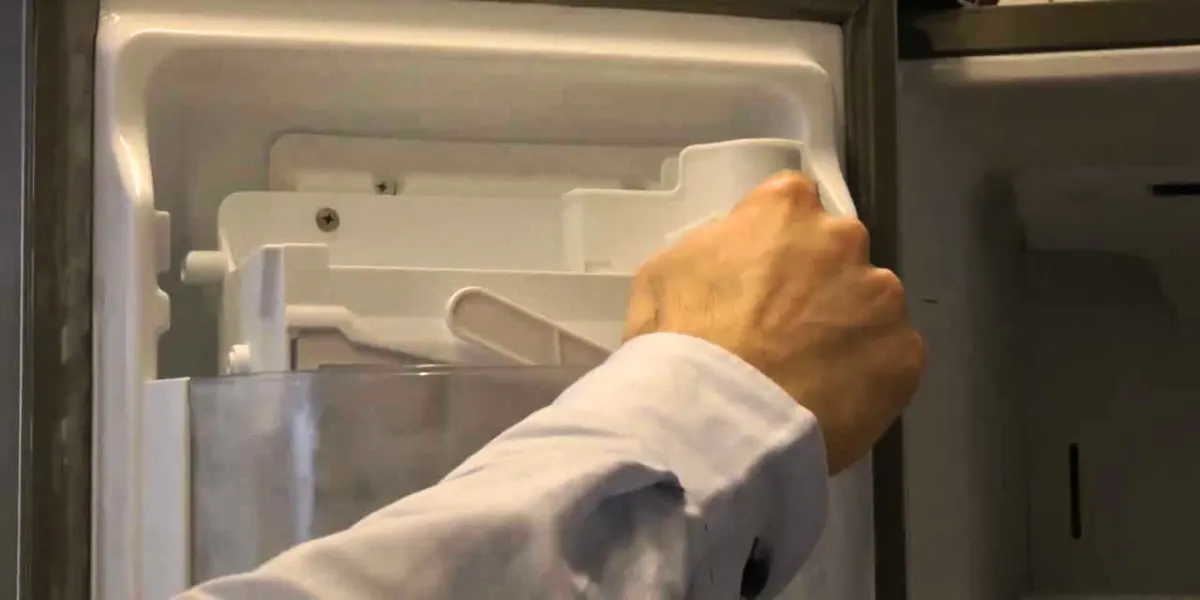
Lg Refrigerator Ice Maker Not Filling With Water
Is your LG refrigerator ice maker not filling with water?
Several factors could be causing this issue, such as jammed ice buckets, low water pressure, ice on water lines, defective auger motors, or clogged water filters.
Additionally, check if the water filter is correctly installed to ensure proper water flow for ice making and water dispensing.
Try putting your fridge in test mode to diagnose the problem accurately.
11 Top Causes And Solutions: LG Refrigerator Ice Maker Not Filling With Water
1. Faulty Water Inlet Valve
The water inlet valve’s primary function is to supply water to the main dispenser unit. If this valve becomes faulty, the ice maker won’t get water.
Test the valve with a multimeter and replace it if it’s defective. Note that LG refrigerators usually have two main valves, so check both of them.
2. Water Filter Not Working
The water filter is crucial for cleaning and improving water taste. If you notice a change in water taste, your water filter might be faulty or incorrectly installed.
Put your fridge in test mode, and if the LG Refrigerator Ice Maker is still not filling with water, the filter is likely the issue. Ensure proper filter installation or replace it.
3. Kinked Water Hose
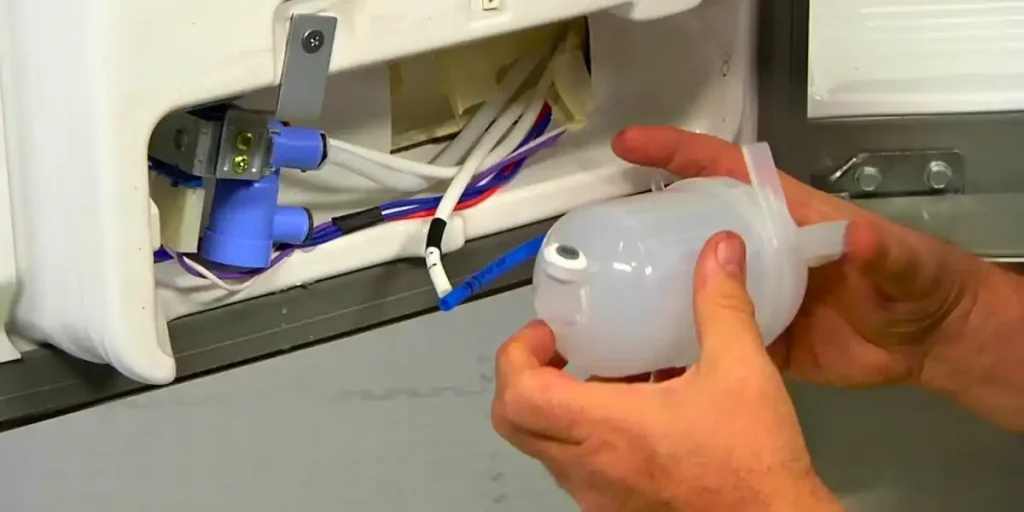
Check the water hose behind your LG fridge. If it’s bent or kinked, it can restrict water flow to the inlet valve, leading to the ice maker not filling with water. Straighten the hose or replace it if damaged.
4. Ice Maker Not Working
Ensure that the ice maker is functioning correctly. Check if the ice tray turns, indicating proper operation.
If it fails the diagnostic test or lacks power, there may be an issue with the ice maker’s motor, and you should replace it.
5. Faulty Control Board
The control board is the refrigerator’s brain, and if it becomes faulty, it won’t send power to various parts, including the ice maker.
Only check the control board after confirming other components are functioning correctly.
If it only works in reset mode, there may be an issue with the control board or optical sensors.
6. Jammed ice bucket
In some LG refrigerators, you can pull out the ice bucket straight from the compartment. However, some models require lifting the ice bucket before removing it.
If your ice maker is located in the freezer rather than inside the refrigerator, ice accumulation around the bucket could cause it to become jammed.
Other causes of a jammed ice bucket include a leaking or clogged water line, an expired water filter, a malfunctioning ejector, or the refrigerator’s thermostat set at the wrong temperature.
7. Water-pressure issues
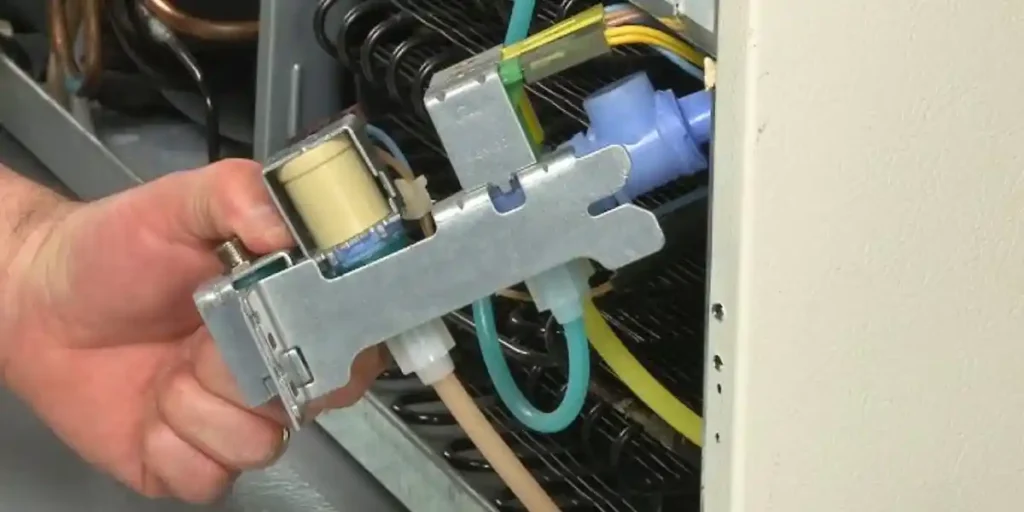
Insufficient water pressure in your home can lead to malfunctioning ice makers.
If the water flow through your home’s inlet valve lacks adequate pressure, your refrigerator’s components won’t function properly.
Ensure that your home’s water pressure meets the minimum requirement of 20 psi. Low pressure due to clogged pipes or poor plumbing can lead to the ice maker and dispenser not working correctly.
8. Frozen water line
If your ice maker still isn’t working, there might be a clogged or frozen water line. Ice production can build up within your refrigerator’s supply line, causing a malfunction.
The most common causes of frozen water lines include ice blockages in the supply line, water dispenser, or ice bucket.
Additionally, a frozen water-supply line can prevent water from reaching the ice maker and the freezer’s temperature.
9. Clogged water filter
Some LG refrigerators have a water line connected to the same water filter as the water dispenser.
A clogged water filter can hinder water flow to the ice maker, leading to no ice production.
The water filter’s role is to provide clean water to the ice maker. If it becomes clogged with dirt and grime, the water flow to the ice maker will be restricted.
10. Refrigerator door switch issues
Before checking for a faulty door switch, make sure to turn off your refrigerator’s power supply.
Unplug the refrigerator or remove the corresponding fuse in your home’s circuit box.
A defective door switch can cause problems with the ice maker even if the refrigerator’s door is closed.
The ice machine relies on the refrigerator door switch to turn on and off properly.
11. Defective auger motor
Your LG refrigerator’s ice bucket has an auger that pushes ice into the dispenser’s chute when you press the lever. The auger is powered by a motor that rotates it.
If the auger motor is faulty, it won’t turn, and the ice dispenser won’t function correctly.
If you notice that your LG refrigerator doesn’t make a noise when you close its door, the auger motor might be defective.
Maintaining Your Ice Maker for Optimal Performance
Regular Cleaning and Maintenance
To keep your LG refrigerator’s ice maker running smoothly, you must perform regular cleaning and maintenance.
Start by unplugging the fridge and removing any ice from the ice maker. Use a soft cloth and mild detergent to clean the ice maker and the ice tray thoroughly.
Rinse it well and let it dry completely before placing it back into the freezer.
Check Water Inlet and Filters
Inspect the water inlet valve and filters to ensure they are functioning correctly. Check for any signs of damage or clogs that might be affecting water flow.
If you notice any issues, such as a decrease in ice production or odd-tasting ice, it’s time to replace the water filter.
Refer to your refrigerator’s manual for the proper filter replacement guidelines.
Monitor Water Line and Hose
Regularly check the water line and hose connected to your LG refrigerator. Look for any kinks, bends, or obstructions that could restrict water flow to the ice maker.
If you spot any issues, straighten the hose or replace it if necessary. Proper water flow is crucial for the ice maker to work efficiently.
Ensure Proper Temperature Settings
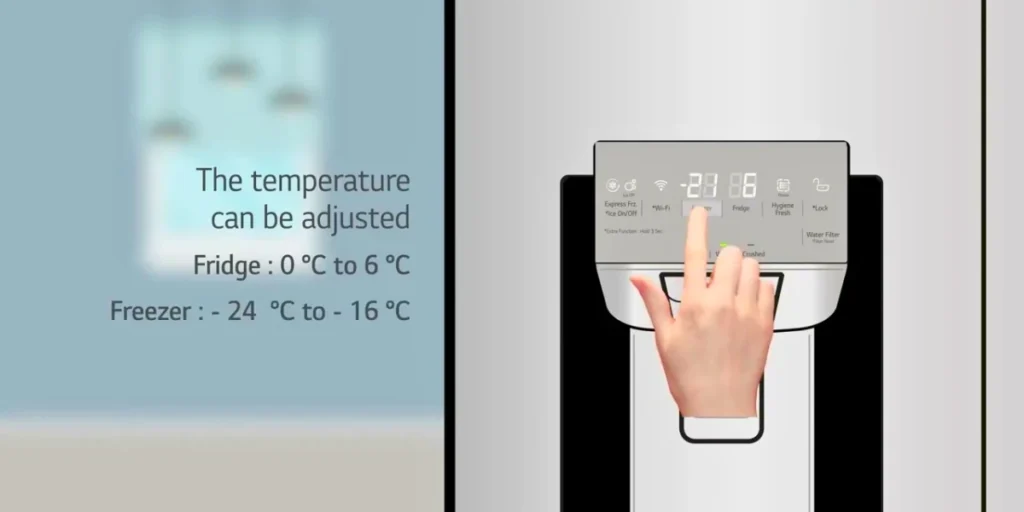
Maintaining the correct temperature inside your refrigerator and freezer is vital for the ice maker’s performance.
Set the freezer temperature to around 0°F (-18°C) and the refrigerator temperature to approximately 37°F (3°C). Avoid setting the temperatures too low, as it can lead to ice production problems.
Regularly Empty and Clean the Ice Bucket
Don’t forget to empty and clean the ice bucket regularly. Old ice can clump together, affecting the ice maker’s ability to produce new ice.
Take out the ice bucket, discard any old ice, and rinse it with warm water. Allow it to dry completely before putting it back in place.
Defrost Your Freezer When Needed
Frost buildup in the freezer can disrupt the ice maker’s function. If you notice excessive frost, it’s time to defrost your freezer.
Unplug the refrigerator, remove all the food, and let the frost melt naturally. You can also speed up the process by placing a bowl of hot water inside the freezer.
Once the ice has melted, wipe the interior dry, and plug the refrigerator back in.
Regularly Inspect and Replace Gaskets
The rubber gaskets around the refrigerator and freezer doors help maintain a proper seal, preserving the cold temperature inside.
Check these gaskets regularly for any signs of wear or damage. If you notice any gaps or tears, replace the gaskets promptly to prevent air leakage and ice maker issues.
Avoid Overloading the Freezer
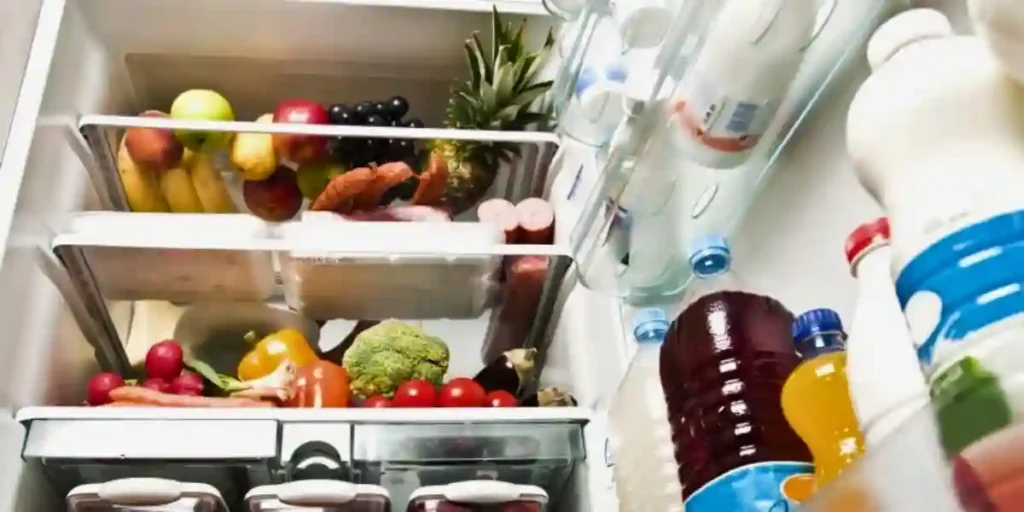
Though it might be tempting to stuff the freezer with items, avoid overloading it.
An overly packed freezer can obstruct airflow, leading to temperature fluctuations and reduced ice production.
Keep a reasonable amount of space for proper air circulation.
Address Any Malfunctions Promptly
If you notice any issues with your LG refrigerator’s ice maker, address them promptly.
Investigate the problem and try to troubleshoot it yourself using the manufacturer’s manual.
If you’re unsure or unable to fix the issue, contact LG’s customer support or a professional technician for assistance.
Be Mindful of Water Quality
The quality of water you use directly impacts the taste and clarity of your ice. If you have hard water, consider using a water softener or a filtration system to improve water quality.
Additionally, avoid using the ice maker to produce ice for beverages other than water, as it might affect the taste and cleanliness of the ice.
FAQs
Why Is My Ice Maker Not Working Even After A Filter Replacement?
If you’ve already replaced the water filter, but the ice maker is still not working, other factors might contribute to the issue. Check for any kinks or bends in the water hose that connects to your LG refrigerator.
Also, ensure that the ice maker is functioning correctly by observing if the ice tray turns during the ice-making process.
What Can Cause A Jammed Ice Bucket In LG Refrigerators?
A jammed ice bucket in LG refrigerators can occur due to various reasons. Ice accumulation around the ice bucket can lead to jamming, preventing the ice maker from dispensing ice properly.
A leaking or clogged water line, a malfunctioning ejector, or incorrect thermostat settings can also make the ice bucket jam.
How Can Low Water Pressure Affect My Ice Maker?
Low water pressure in your home’s water supply can adversely affect the ice maker’s performance. Insufficient water pressure can lead to the ice maker not receiving enough water to produce ice effectively.
To ensure proper ice maker functioning, it’s crucial to have sufficient water pressure, generally around 20 psi, flowing through the water inlet valve.
What Should I Do If My LG Refrigerator’s Ice Maker Is Still Not Working?
If you’ve tried all the troubleshooting steps and your LG refrigerator’s ice maker is still not working, it might be time to seek professional assistance.
Contact LG’s customer support or a qualified technician to diagnose and address the underlying issue.
Conclusion
Don’t let your LG refrigerator’s ice maker woes freeze your spirits! Together, we’ve unveiled the secrets behind this icy puzzle.
From a faulty water inlet valve to a clogged water filter, various culprits might be at play.
Regular maintenance, proper temperature settings, and quality water can keep your ice maker in top shape.
If troubles persist, don’t hesitate to seek expert help from LG’s customer support or a professional technician.
Enjoy a chill-filled journey with your ice maker back on track!
Referrence: https://static1.squarespace.com/static/647daabe4c6910145946b301/t/648ec39dfa95ba0a30df5931/1687077789923/wumusejamopolugimidotuv.pdf
